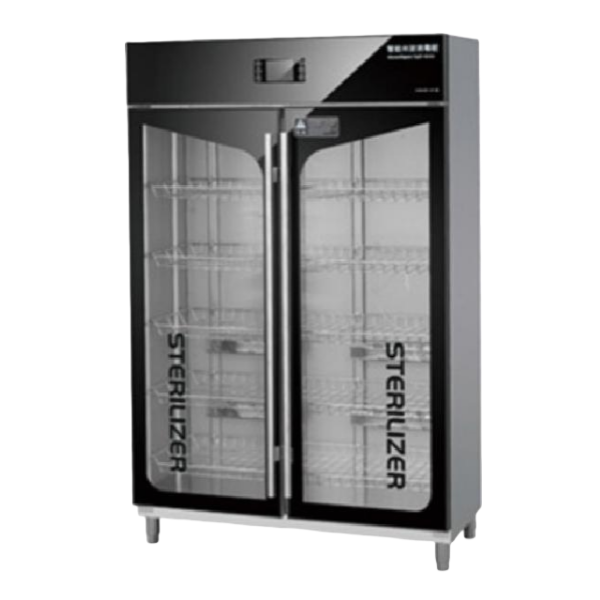1. The principle of UV brand disinfection cabinet appliances
The sterilization principle of UV brand disinfection cabinets is to irradiate bacteria, viruses and other microorganisms with ultraviolet rays to damage the structure of DNA in their bodies, kill bacteria or lose their ability to reproduce. DNA has the strongest absorption of ultraviolet rays with a wavelength of 253.7nm. The sterilization effect of ultraviolet rays is related to its irradiation intensity and total irradiation amount, and generally the killing rate can reach ≥ 99%.
2. The principle of high temperature brand disinfection cabinet appliances
High temperature disinfection is achieved by heating the temperature to 100 ℃ and maintaining it for more than 15 minutes to achieve the purpose of sterilization. This high temperature sterilization mainly includes: microorganisms including bacteria and viruses. High temperature brand disinfection cabinets generally use far infrared heating. The electric heating element heats the air or generates radiant heat. After the appliance is continuously exposed to high temperature for a period of time, the protein tissue of bacteria, viruses and other microorganisms on its surface is deformed and killed.

Classification of high temperature disinfection cabinets
High temperature disinfection cabinets are generally divided into one-star disinfection cabinets and two-star disinfection cabinets. The basis for the distinction is the difference in their sterilization effects. Generally, a one-star disinfection cabinet requires the temperature inside the disinfection cabinet to be above 100°C, which can kill bacteria such as Escherichia coli and Staphylococcus aureus, with a killing rate of 99.9%, but cannot kill hepatitis B virus;
A two-star disinfection cabinet requires the temperature inside the disinfection cabinet to be above 120°C. In addition to killing bacteria that can be killed by a one-star disinfection cabinet, it can also kill viruses such as hepatitis B virus and polio virus, with a killing rate of 99.9%. However, it does not work on inorganic chemical poisons and a few special biological viruses.

